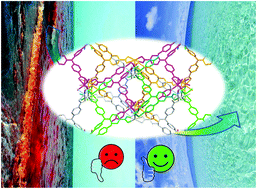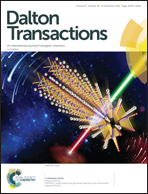Photoactive metal–organic framework as a bifunctional material for 4-hydroxy-4′-nitrobiphenyl detection and photodegradation of methylene blue†
Abstract
Environmental pollution resulting from organic pollutants is becoming an overwhelming problem throughout the world, and how to efficiently detect or eliminate these organic pollutants remains an important issue for environmental protection. Herein, a cadmium(II)-based MOF, Cd-TCAA, was successfully prepared by the hydrothermal reaction of 4,4′,4′′-tricarboxyltriphenylamine (H3tca), (E)-1,2-di(pyridin-4-yl)diazene (abp) and cadmium nitrate. Because the H3tca moiety is a typically versatile functional material that exhibits good hole-transporting capabilities, efficient light harvesting, and excellent electron-donating properties, this novel photoactive metal–organic framework operates as a bifunctional material for the detection and degradation of organic pollutants. It exhibits excellent selectivity and sensitivity towards 4-hydroxy-4′-nitrobiphenyl (HNBP) with a detection limit of 50 nM in solution, and represents the first example of a MOF-based sensor for the detection of HNBP. The photocatalytic activity of Cd-TCAA was also determined by investigating the photo-induced degradation of methylene blue (MB). Cd-TCAA has the advantages of excellent catalytic activity, stability, and recyclability.



 Please wait while we load your content...
Please wait while we load your content...